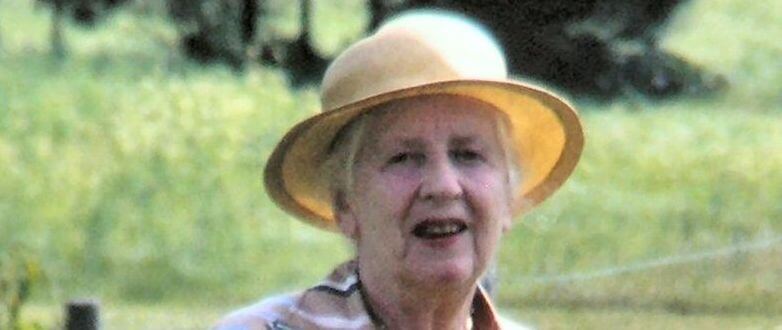From an article for Bucks Free Press by Alison Bailey and Neil Rees.

During WWII our area became a haven for evacuees. These included a group of Hampstead émigrés with two Viennese women artists, Marie-Louise von Motesiczky and Mary Duras at its centre.
Mary, the older by 10 years, was an established sculptor in Prague who exhibited her work throughout Europe and was awarded a gold medal at the International Exhibition in Paris in 1937. Planning to hold an exhibition here, she arrived in March 1938, just as German troops marched into Czechoslovakia. As a member of the anti-Nazi group Prager Secession she successfully applied for refugee status and initially relied on support from the Czech Refugee Trust Fund. Her Jewish husband, Arnold Schὕck, was unable to follow her. He was deported to Auschwitz which he survived, but his health never fully recovered.
Marie-Louise, from a wealthy Jewish family, fled Vienna the day after the annexation of Austria into Nazi Germany on 12 March 1938. She was just at the start of her artistic career and held her first solo exhibition in Amsterdam the following year. Her brother Karl, a talented celloist, stayed behind. He established a resistance group but was denounced after hiding some Jewish friends and helping them escape. He died in Auschwitz in 1943.
Having known each other since the 1920s, and initially settling in Hampstead, Marie-Louise may have followed Mary out to Amersham in 1941. Mary chose her country escape by spreading a map out and allowing her finger to fall at random. Her haphazard selection was Amersham, but she couldn’t find accommodation in the overcrowded town and ended up at Wendover Dean. In 1939 Mary was taken in with another Czech refugee, Ilona Kauders, by Fred and Evangeline (Eva) Puddephatt at Russelvue, Wendover Dean, near to the Halfway House, now the Firecrest. He was an agricultural foreman and engineering contractor. They even let her use part of the kitchen as her sculpture studio! Two years later artist, Augusta ‘Dussie’ North offered her lodgings and more space for her studio in a converted barn at Small Dean Farm nearby. Her work during this period included busts of Marie-Louise, Winston Churchill and Jan Masaryk who was Foreign Minister of the Czechoslovak Government-in-Exile. Masaryk was based, for much of the war, in Wingrave, near Aylesbury.

More successful in finding rooms in Amersham, Marie-Louise, her mother, Henriette and her nanny, Marie Hauptmann, lodged with the eccentric Gordon Milburn and his wife, Mary in Durris, Stubbs Wood before buying Cornerways in Chestnut Lane. They spoke very little English, had strong Viennese accents and must have been regarded with great suspicion by local residents. Their wealth made exile easier, but they also used their money and connections to support émigré friends who weren’t so lucky.

Pet dogs and Marie’s Austrian cooking soon made Cornerways a home. It was filled with family heirlooms, old Viennese furniture and the von Motesiczky art collection which Karl successfully shipped out to them. Marie-Louise’s studio in the comfortable sitting room became a meeting place for other émigrés, intellectuals, poets, artists, and writers. Elias Canetti, the writer of Auto-da-Fé, who later won the Noble Prize for Literature, followed Marie-Louise out to Buckinghamshire. His extensive library filled all the bookshelves in the house. With his wife Veza, he lodged with Father Milburn who he harshly satirised in his memoir Party in the Blitz. Marie-Louise’s portrait, now in the Belvedere Museum in Vienna, is a much kinder portrayal of the elderly priest.
Other visitors included the Czech poet and anthropologist, Franz Baermann Steiner and the Austrian Expressionist, Oskar Kokoschka who was a major influence on Marie-Louise’s work. Frederick Kankam Boadu, a student and anti-colonial activist from The Gold Coast (now Ghana), also visited as can be seen in this photo.
![Photograph of Marie-Louise von Motesiczky with F.R. Kankam-Boadu and an unidentified young man during a visit to Amersham [1943-5] Presented by the Trustees of the Marie-Louise von Motesiczky Trust, March 2012 http://www.tate.org.uk/art/archive/TGA-20129-6-5-35-2-1](https://amershammuseum.org/wp-content/uploads/2020/02/Marie-LouiseAm1-2-300.jpg)
Both artists took part in the Allied Artists Exhibition which toured Britain in 1942. Two years later, the Czechoslovak Institute held an “Exhibition of Painting and Sculpture by Marie-Louise Motesiczky and Mary Duras” with both artists’ work reflecting their experience of exile and isolation. Oskar Kokoschka made an unsuccessful attempt to get The Tate to purchase some of Marie-Louise’s pictures from the exhibition. Today The Tate owns seven of her paintings and has named a gallery the Marie-Louise Archive Gallery in her honour.
A bust of Jan Masaryk by Mary Duras was given to the Czech Embassy by the current occupant of the studio near Wendover, where it was left when Mary returned to Prague after the war. Marie-Louise spent the rest of her life in Britain. Five paintings have been given by the Marie-Louise von Motesiczky Charitable Trust to the Amersham Museum where they are on permanent display.
The Undiscovered Expressionist A Life of Marie-Louise von Motesiczky by Jill Lloyd and The Czech Connection Jan Masaryk & President Beneš and the Czechoslovak Government-in-Exile in London and Bucks during World War 2 by Neil Rees are available to buy at Amersham Museum.
The Undiscovered Expressionist A Life of Marie-Louise von Motesiczky by Jill Lloyd, The Czech Connection Jan Masaryk & President Beneš and the Czechoslovak Government-in-Exile in London and Bucks during World War 2 by Neil Rees and The Rabbi in the Green Jacket, Memories of Jewish Buckinghamshire 1939 – 1945 by Vivien and Deborah Samson are available to buy at Amersham Museum.

